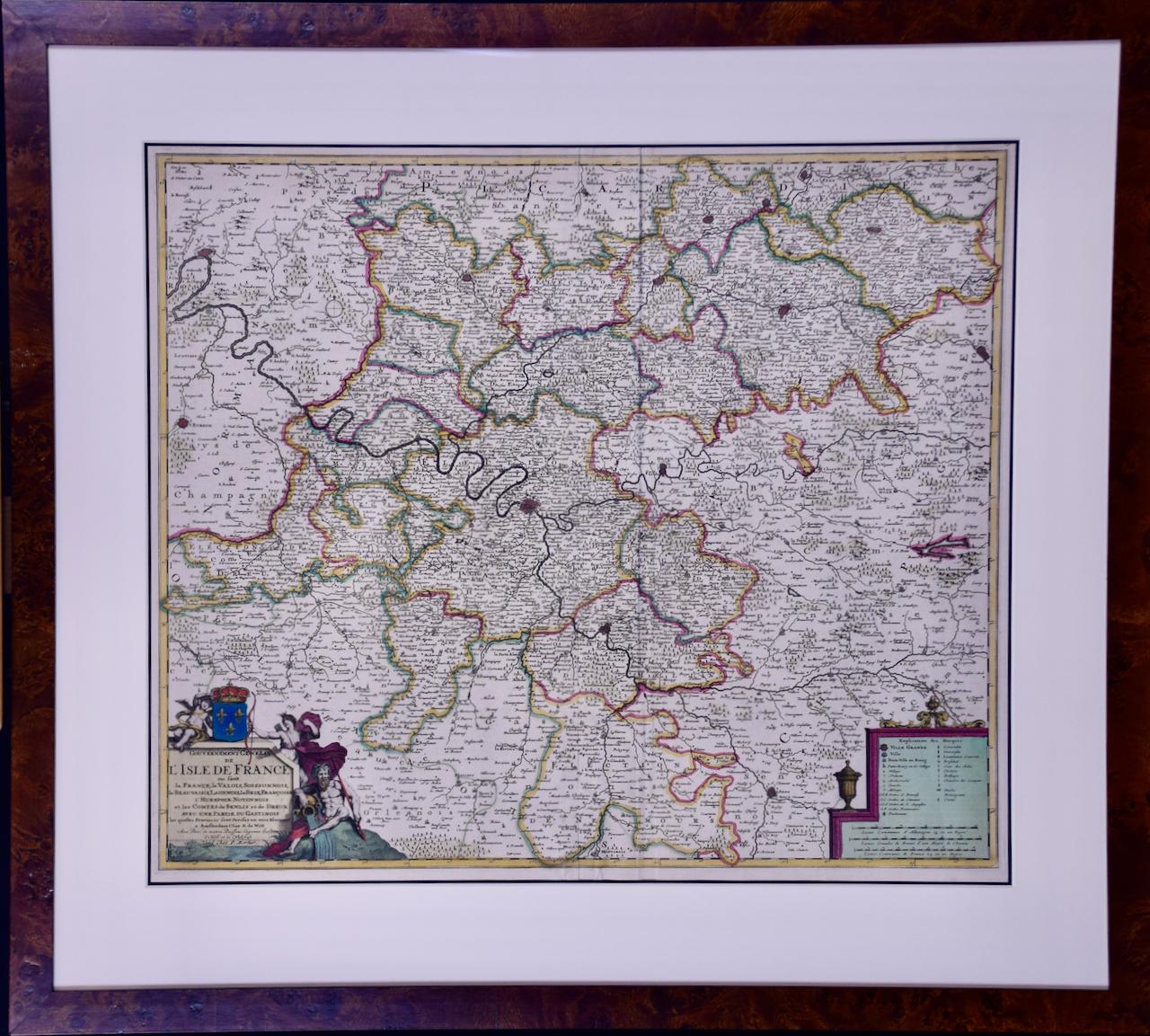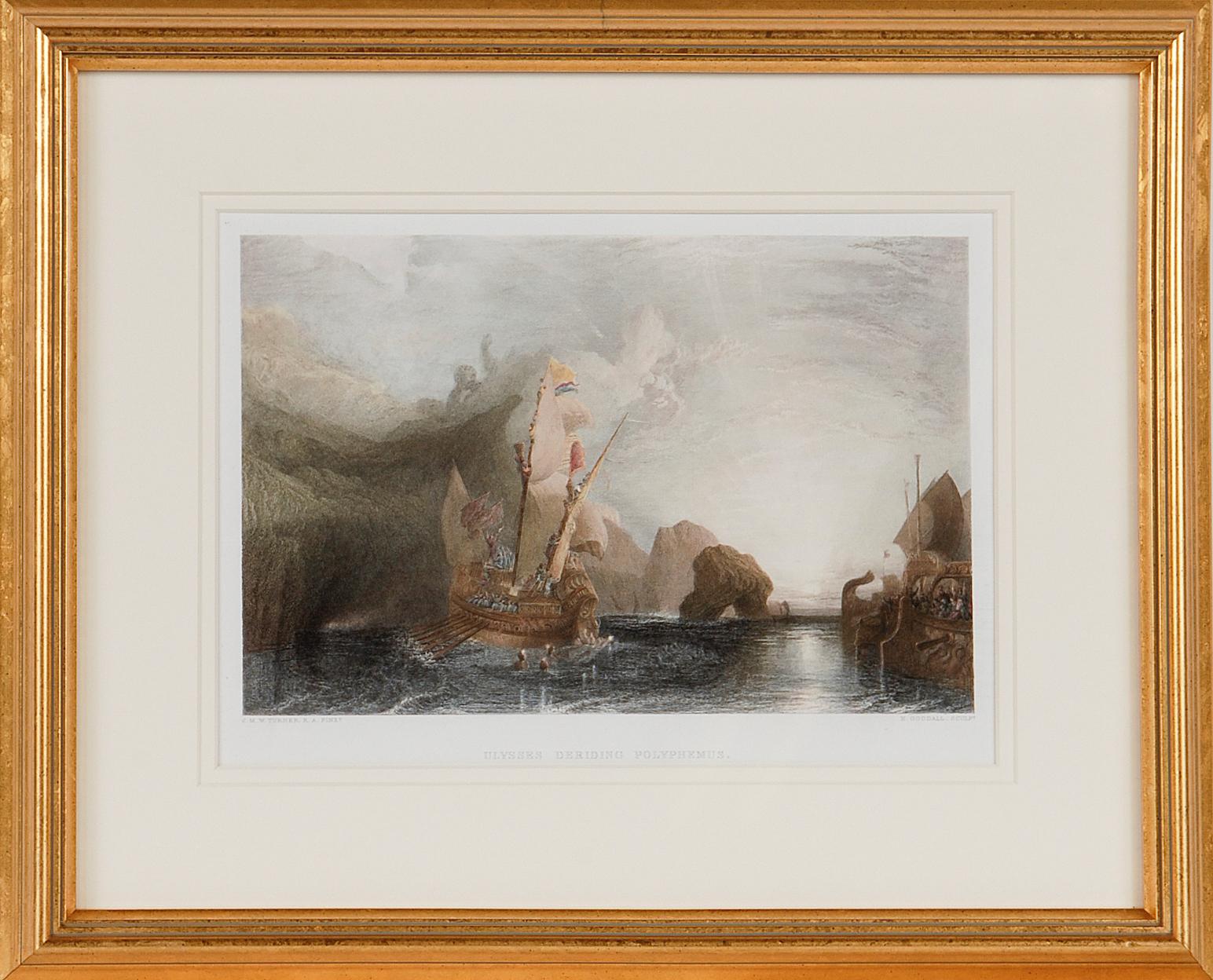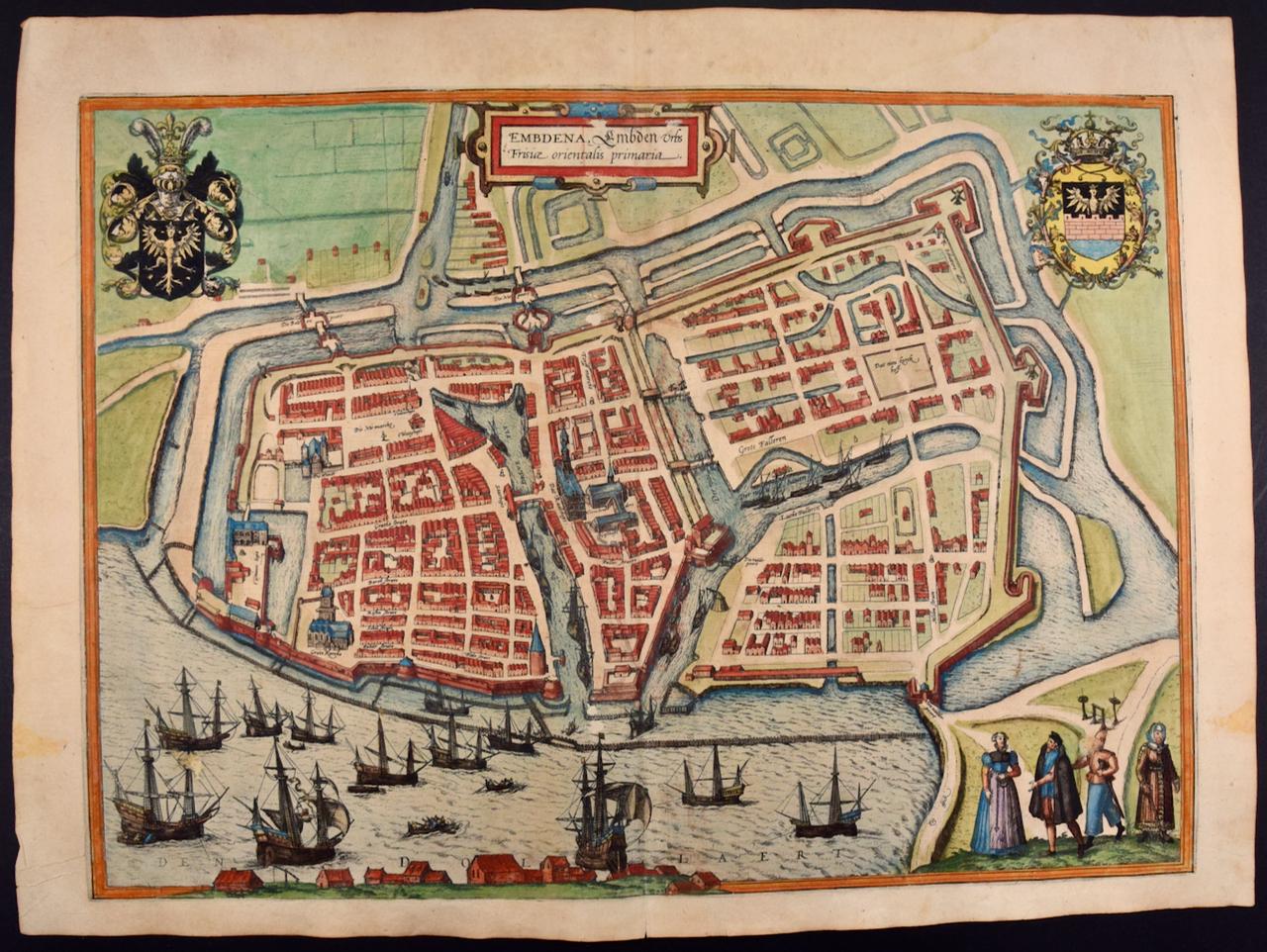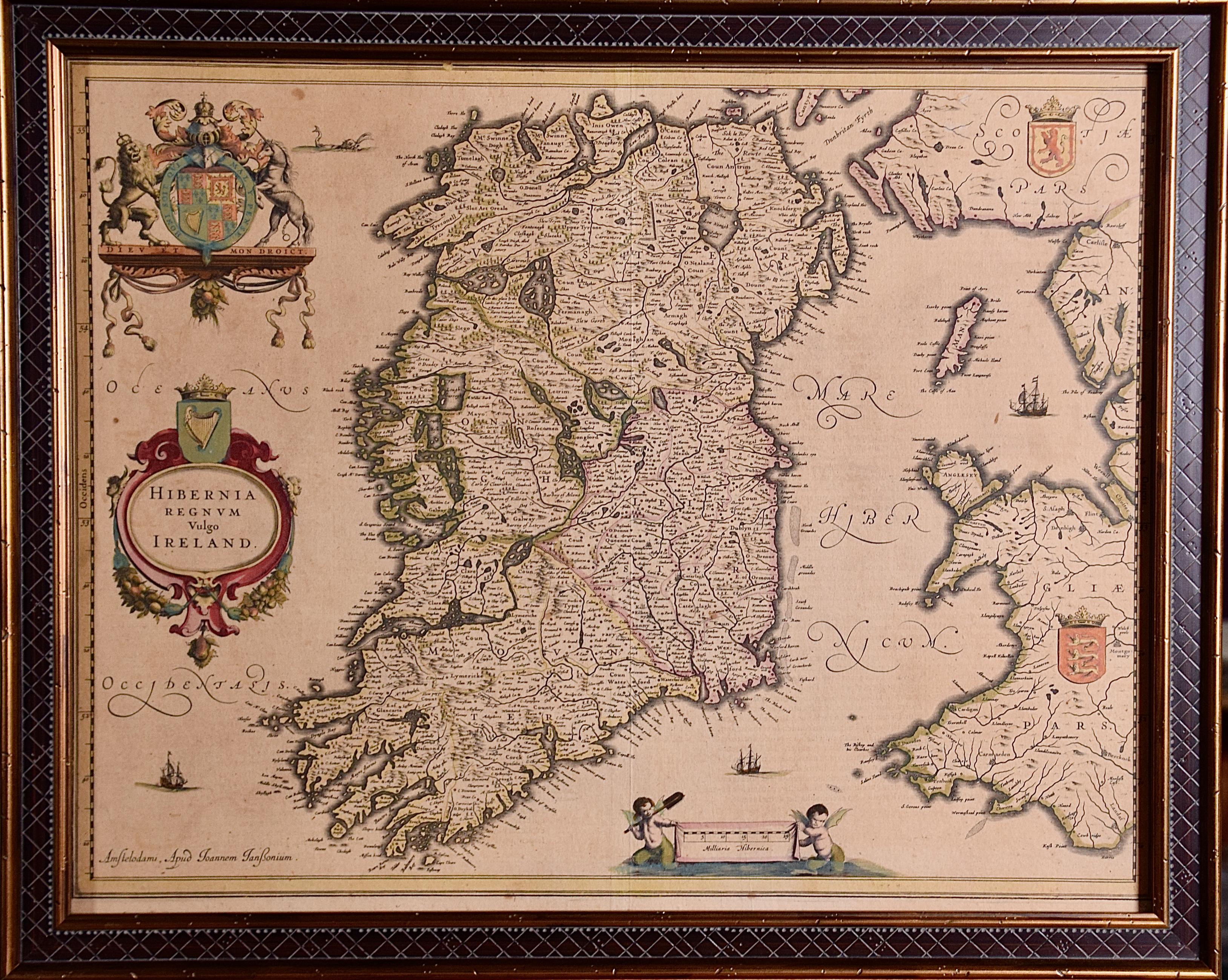Items Similar to 18th Century Map Engraving - Newport, a Strong Sea-Port Town in Flanders
Want more images or videos?
Request additional images or videos from the seller
1 of 8
Unknown18th Century Map Engraving - Newport, a Strong Sea-Port Town in FlandersUnknown
Unknown
About the Item
A map of Nieuwpoort, anglicised to 'Newport', in northern Belgium. There is a panorama in the upper quarter depicting major landmarks. Below is a plan of the town, including its strong defences and ships at the port in the lower register. Inscribed with the title in plate to the lower edge, 'Newport a Strong Sea-Port Town in Flanders, restored to the Empire by the Treaty of Utrecht'. Engraved for 'Mr Tindal's Continuation of Mr Rapin's 'History of England'' with maps by Richard William Seale and John Basire and first published in 1727. This was a continuation of 'L'Histoire d'Angleterre' by Paul de Rapin-Thoyras (1661-1725) which was printed at the Hague in 1724. On laid.
- Creation Year:Unknown
- Dimensions:Height: 15.36 in (39 cm)Width: 19.3 in (49 cm)
- Medium:
- Period:
- Condition:There are several small closed tears around the edges. There is a larger closed tear to the upper-right edge measuring 4.5cm. There is a centrefold crease and some mild foxing and discolouration around the edges. There is a water stain to the upper.
- Gallery Location:Corsham, GB
- Reference Number:
About the Seller
4.9
Platinum Seller
These expertly vetted sellers are 1stDibs' most experienced sellers and are rated highest by our customers.
Established in 2010
1stDibs seller since 2018
857 sales on 1stDibs
Typical response time: 5 hours
- ShippingRetrieving quote...Ships From: Corsham, United Kingdom
- Return PolicyA return for this item may be initiated within 30 days of delivery.
More From This SellerView All
- 18th Century Map Engraving - Mechlin, or MalinesLocated in Corsham, GBA map of Mechelen, known as Malines in French and Mechlin in English, a city and municipality in the province of Antwerp in the Flemish Region of Belgium. A birds-eye view plan of th...Category
18th Century More Prints
MaterialsEngraving
- 18th Century Map Engraving - Plan of the Works of the City of Messina, SicilyLocated in Corsham, GBA map of Messina, a harbour city in northeast Sicily. Inscribed with the title in plate to the lower edge, 'Plan of the Works of the City of Messina, one of the strongest and most co...Category
18th Century More Prints
MaterialsEngraving
- Henri Liebaux and Guillaume De L'Isle - 1706 Engraving, Map Of The MoscovitesLocated in Corsham, GBA early 18th Century map showing a section of Muscovite Russia. This is the lower half of the complete original map, finished with hand colouring. The artist's names are engraved in ...Category
18th Century More Prints
MaterialsEngraving
- John Thomson (1777-1840) - 1830 Map Engraving, Northern HemisphereBy John ThomsonLocated in Corsham, GBA fine engraved map of the Northern Hemisphere, from the second edition of John Thomson's 'New General Atlas' published in 1830. On paper.Category
Early 19th Century More Prints
MaterialsEngraving
- John Thomson (1777-1840) - 1830 Map Engraving, Chart of the WorldBy John ThomsonLocated in Corsham, GBA fine engraved map of the world on Mercator's projection, from the second edition of John Thomson's 'New General Atlas' published in 1830. On paper.Category
Early 19th Century More Prints
MaterialsEngraving
- John Thomson (1777-1840) - 1830 Map Engraving, The Rivers of the WorldBy John ThomsonLocated in Corsham, GBA fine engraved chart table showing the lengths of the principal rivers across the world, from the second edition of John Thomson's 'New General Atlas' published in 1830. On paper.Category
Early 19th Century More Prints
MaterialsEngraving
You May Also Like
- Chasseur Fortune, Engraving, Van Falenz / Le Bas, Hunter, Decorative PieceLocated in Greven, DELe Chasseur Fortune Engraving framed Bez.: C. Van Falenz pinixit // Jac. Ph. Le Bas Sculp. // a Paris chez Le Bas graveur du Cabinet du Roy au bas de la rue de la Harpe...Category
18th Century Rococo Animal Prints
MaterialsEngraving
- L'Isle de France: A Hand-colored 17th Century Map by De WitBy Frederick de WitLocated in Alamo, CAThis colorful and detailed 17th century hand-colored copperplate map by Frederick De Wit was published in Amsterdam between 1666 and 1760. The map depicts the Île-de-France, which is one of the ancient provinces of France. Paris is located in the center of the map, with Versailles to the southwest The map extends from Rouen in the west to Reims in the east. The area around Paris, the Véxin Français, was the original domain of the king of France. Other areas were ruled by French feudal lords. For example, the Véxin Normand area was the domain of the Duke of Normandy...Category
Early 18th Century Old Masters More Prints
MaterialsEngraving
- Map of the Russian Empire: An Original 18th Century Hand-colored Map by E. BowenLocated in Alamo, CAThis is an original 18th century hand-colored map entitled "A New & Accurate Map of The Whole Russian Empire, As Contain'd Both In Europe and Asia, Drawn from Authentic Journals, Sur...Category
Mid-18th Century Old Masters Landscape Prints
MaterialsEngraving
- Ulysses Deriding Polyphemus: A Framed 19th C. Engraving After J. M. W. TurnerBy J.M.W. TurnerLocated in Alamo, CAThis beautiful 19th century framed hand-colored engraving/etching entitled "Ullyses Deriding Polyphemus" by Edward Goodall is based on an original 1829 painting by the renowned Briti...Category
Mid-19th Century Romantic Landscape Prints
MaterialsEngraving, Etching
- View of Emden, Germany: A 16th Century Hand-colored Map by Braun & HogenbergBy Franz HogenbergLocated in Alamo, CAThis is a 16th century original hand-colored copperplate engraved map of a bird's-eye View of Embden, Germany entitled " Emuda, vulgo Embden vrbs Frisia orientalis primaria" by Georg Braun & Franz Hogenberg, in volume II of their famous city atlas "Civitates Orbis Terrarum", published in Cologne, Germany in 1575. This is a beautifully colored and detailed map of Emden, a seaport in northwestern Germany, along the Ems River and perhaps portions of over Dollart Bay, near the border with the Netherland. The map depicts a bird's-eye view of the city from the southwest, as well as a view of the harbor and an extensive system of canals. Numerous ships of various sizes, as well as two rowboats containing numerous occupants are seen in the main waterway in the foreground and additional boats line two canals in the center of the city. Two men and two women are shown on a hill in the foreground on the right, dressed in the 16th century style of nobility. Two ornate crests are included in each corner. A title strap-work cartouche is in the upper center with the title in Latin. The crest on the right including Engelke up de Muer (The Little Angel on the Wall) was granted by Emperor Maximilian I in 1495. This is an English translation of an excerpt of Braun's description of Embden: "In Emden, the capital of East Frisia, rich merchants live in very fine houses. The city has a broad and well-situated harbour, which in my opinion is unique in Holland. Frisia and the whole of the Netherlands, for the ships can anchor here right under the city walls. They have also extended the harbour as far as the New Town, so that up to 400 ships can now find shelter here when the sea is rough." The emphasis on the harbor and waterways within the city highlights the importance of Emden's place as a seaport at this time. Embden developed from a Dutch/Flemish trading settlement in the 7th-8th centuries into a city as late as late 14th century. In 1494 it was granted staple rights, and in 1536 the harbour was extended. In the mid-16th century Emden's port was thought to have the most ships in Europe. Its population then was about 5,000, rising to 15,000 by the end of the 16th century. The Ems River flowed directly under the city walls, but its course was changed in the 17th century by the construction of a canal. Emden has canals within its city limits, a typical feature of Dutch towns, which also enabled the extension of the harbor. In 1744 Emden was annexed by Prussia and is now part of Germany. It was captured by French forces in 1757 during the Seven Years' War, but recaptured by Anglo-German forces in 1758. During the Napoleonic French era, Emden and the surrounding lands of East Frisia were part of the short-lived Kingdom of Holland. References:Van der Krogt 4, 1230, State 2; Taschen, Braun and Hogenberg...Category
16th Century Old Masters Landscape Prints
MaterialsEngraving
- Ireland: A Framed 17th Century Hand-colored Map by Jan JannsonBy Johannes JanssoniusLocated in Alamo, CAThis is a 17th century hand-colored map entitled "Hibernia Regnum Vulgo Ireland" by Johannes Janssonius's (Jan Jansson), published in Amsterdam in 1640. This highly detailed map depicts the Emerald Isle with an extensive display of towns, roads, mountains, rivers, lakes and county borders, etc. It includes two decorative cartouches on the left. The title cartouche includes the Irish harp and the second, in the upper left, includes a lion wearing a crown on the left, a unicorn on the right and a coat-of-arms in the middle, which includes another Irish harp. A distance scale is seen in the lower right, augmented with two putti. The map is embellished with three sailing ships and a sea monster. Western portions of Scotland and England...Category
Mid-17th Century Old Masters Landscape Prints
MaterialsEngraving
Recently Viewed
View AllMore Ways To Browse
Ship Engraving
Antique Landmarks
Engraving Empire
Antique Newport
Belgium Antique Map
Flanders 18th
Map Utrecht
Original Italian Art Posters
Antique Map Art
Propaganda Poster Original
Heavy Mens
Sculptures By Salvador Dali
1950s Vintage Paris Fashion
Original World War Two Posters
Original Boat Poster
Best Sellers Art Prints
Japan Bear
Japanese Bear




